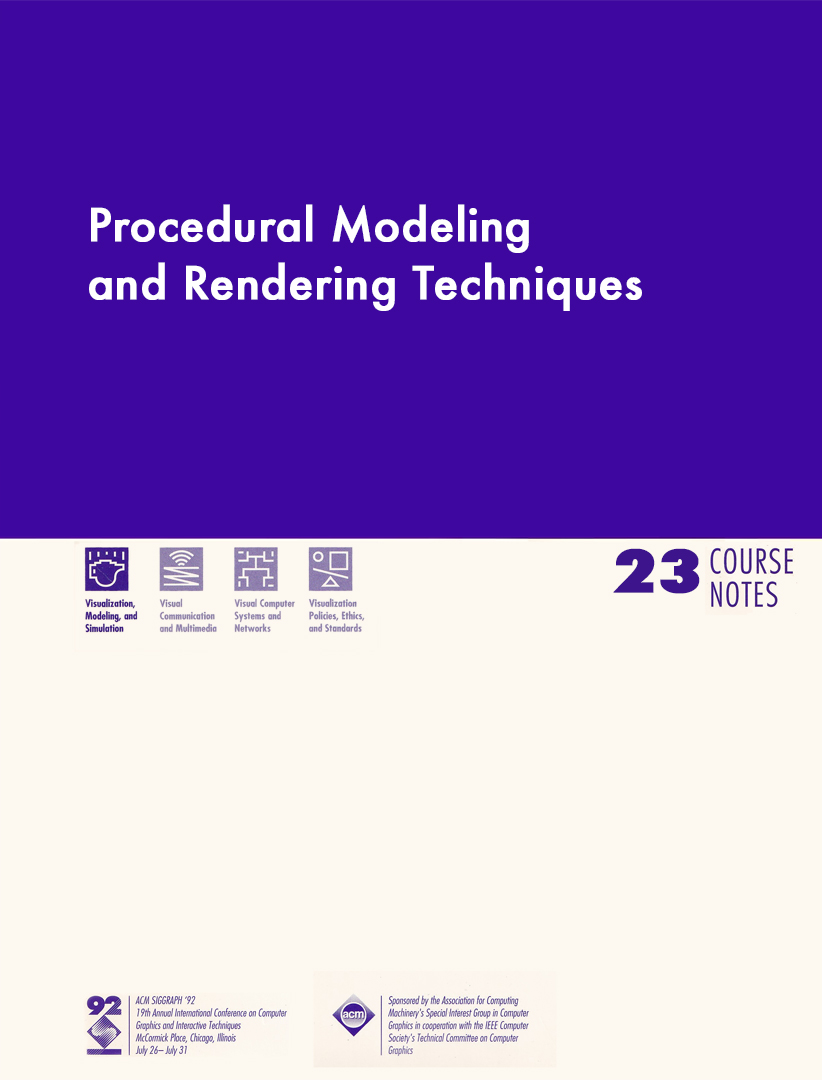“Procedural Modeling and Rendering Techniques” by Ebert, Musgrave, Peachey and Perlin
Conference:
Type(s):
Entry Number: 23
Title:
- Procedural Modeling and Rendering Techniques
Course Organizer(s):
Presenter(s)/Author(s):
Abstract:
Advanced
Basic working knowledge of rendering, shading, and solid texturing techniques. Some knowledge of fractals and basic volume rendering techniques is useful, but not required.
Who Should Attend
People interested in procedural modeling, shading, and texturing techniques; various design approaches and techniques; and procedures for producing realistic images.
Objectives
Attendees gain understanding of procedural techniques for solid texturing and insight into design approaches in developing procedures. The course offers a toolbox of specific procedures and basic primitive functions (noise, turbulence, etc.) to produce realistic images, several advanced procedural approaches for modeling object geometry (hypertextures, gases, fractals), and an introduction to animating these procedural objects and textures.
Description
This course imparts a working knowledge of procedural approaches in modeling, shading, rendering, and animation. Procedural approaches include 20 and solid textures, hypertextures, volume density functions, fractal, and genetic algorithms. In-depth descriptions of basic primitive functions are presented, including noise and turbulence functions. Animations using these techniques are shown. The course also describes fractal applications and their relationship to other procedural techniques. Participants see details about these techniques, including useful and practical guidelines for selecting parameter values, which normally are left out of technical papers.
Contents/Schedule PDF:
Contributed By:
- Mary Whitton
Location:
- Charles Babbage Institute Archives, University of Minnesota




